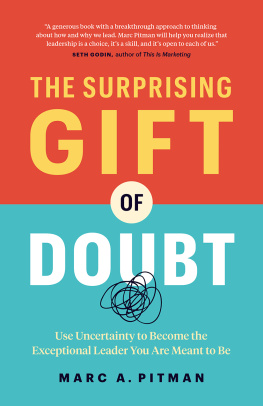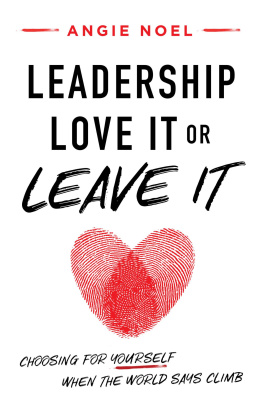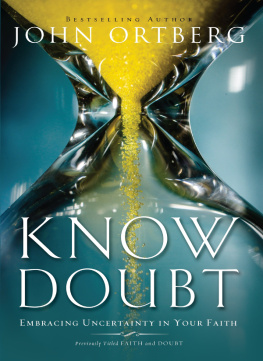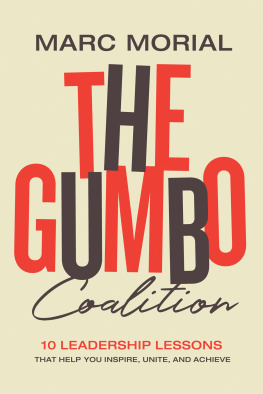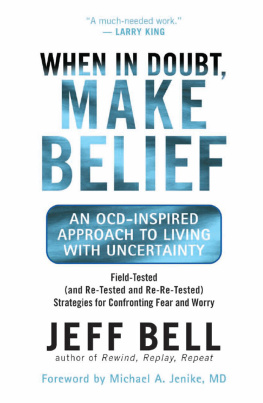Copyright 2021 by Marc A. Pitman
All rights reserved. No part of this book may be reproduced, stored in a retrieval system or transmitted, in any form or by any means, without the prior written consent of the publisher or a licence from The Canadian Copyright Licensing Agency (Access Copyright). For a copyright licence, visit www.accesscopyright.ca or call toll free to 1-800-893-5777.
Some names and identifying details have been changed
to protect the privacy of individuals.
Cataloguing in publication information is available
from Library and Archives Canada.
ISBN 978-1-989603-99-4 (paperback)
ISBN 978-1-77458-038-7 (ebook)
Page Two
www.pagetwo.com
Edited by Kendra Ward
Copyedited by Rebecca Andersen
Proofread by Alison Strobel
Cover design by Fiona Lee
Interior design by Setareh Ashrafologhalai
Interior illustrations by Michelle Clement
Printed and bound in Canada by Friesens
Distributed in Canada by Raincoast Books
Distributed in the US and internationally by Publishers
Group West, a division of Ingram
21 22 23 24 25 5 4 3 2 1
concordleadershipgroup.com
surprisinggiftofdoubt.com
Introduction
L ike most people, throughout life you were probably trained to look to others to explain the rules to you. Growing up, your parents described what was right and what was wrong. You might have learned to seek rules in your faith community. Nearly every day for twelve to twenty years, teachers set the agenda and graded your work. In your job, your supervisors or bosses told you how they wanted the work done.
Until they didnt. At some point, you stopped getting directions.
You might have had an ineffective boss.
Or it could be that you became the top boss.
Leading can be so disorienting. Whether youve taken a long, winding trek to the summit or rapidly risen up the ranks, you now have people looking to you for direction. Now you have to determine the right and wrong path, the way you want the work done. But the higher up you go in an organization, the more you see: Options that you were not aware of before, problems that had never occurred to you, and a much broader spectrum of competing demandsmany of which are legitimatepresent unresolvable conflicts.
It is hardly surprising that so many CEO s and other top executives feel like lost children looking for a teacher to explain the rules. And in our information-saturated world, no shortage of volunteers will explain the rules. Bossy board members, mostly well meaning, will dictate tasks to the CEO . Staff irritated by a lack of direction will impose their views on the boss. Opinionated customers will tell leaders all the ways theyre wrong and how they should fix the problems.
Tony, a CEO of a start-up, told me, When I teach a course, I follow a syllabusa manual that tells me what to do and when to do it. I want a manual like that for my work.
I get it. I understand his desire. But it is completely unrealistic. Tony oversaw three huge areas of responsibilitywith radically different clients, demands, and schedules in eachand any one of which was enough to occupy a normal leader in his field on a full-time basis. He would have needed three manuals to help him, if manuals were even a viable option.
I told Tony he had two alternatives: The first was that he could latch onto a system that directed him just like a curriculum would. It would dictate exactly what to do at every hour of his day. Mondays from 8:00 a.m. to 9:00 a.m. would be for writing notes to follow up with appointments from the previous week. Only Mondays. Only from 8:00 a.m. to 9:00 a.m. After 9:00 a.m. any other follow-up notes would wait until the following Monday.
If you have ever tried a time-management program like this, you know how great it feelslike a weight has been lifted from your shoulders. Your schedule looks like it includes time for every area of your responsibilities. But as soon as you start to apply the system, it falls apart. A sick employee calls at 7:30 a.m. on Monday and you need to cover a client meeting for her. An urgent deadline means you have to push your 8:00 a.m. note-writing to 9:00 a.m., and then to 10:00 a.m. And then to Tuesday. No, Thursday. Until you finally decide to just wait until the following Monday at 8:00 a.m. and hope for the best.
Guess what? Your schedule is the same mess it was before you tried the time-management program.
The first alternative sees you choosing leadership systems that are invariably temporary. And your inability to follow the simple steps that you commit to leaves you feeling worse than before you started.
But there is a second choice. You can create your own curriculum. As I explained to Tony, you can write the rules yourself, determining your own way of measuring success. This can be messy at first, involving some trial and error. But the strategies that result are based on who you are and how you operate. Tony found that with this process and a little intentional scheduling of his week in light of his tasks and goals, he could juggle all the competing demands and include time for writing follow-up notes. In other words, sustainable habits are exactly tailored for you.
This book is about choosing the second alternative.
And, before you say, No, thank you, Marc, and go off in search of the formulaic, quick-fix control manual that you think might solve your problems, Ill admit, the second choice is scary. It takes time. It feels like youre just making it up. And to an extent, you are. But, which would you prefer: Keep seeking outside yourself for someone elses system to solve your problems or finally discover what will work for you?
Because, although there are many successful leaders, there is only one you.
Here is what I have seen in Tony and so many leaders like him across sectors. Perhaps I might even see this in you: You seek out concrete systems like the first because you doubt yourself.
You second-guess yourself. But you cant let your staff know because it will only worry them. Or worse, they will attack you. So, you stuff that doubt down, trying to project confidence. And trying to ignore the stress that doubt bringsthe feeling that maybe youre just not cut out for this leadership position. Maybe the organization would be better off without you. You wonder if you should get out now before people realize that you are not cut out for the job.
Does this sound familiar?
Here is the twist: That doubt you are trying to suppress is a precious gift. It is an invitation to become a better, more integrated, and effective leader than you ever imagined possible.
How do I know this? Because as a consultant and coach, Ive helped struggling leaders and emerging leaders in multinational organizations, tech companies, small businesses, consultancies, and nonprofits use this surprising gift of doubt as a catalyst to learn their unique leadership styles and transform the ways they lead. With the tested and refined strategies in this book, I have supported leaders to grow in confidence and become the leaders they were always meant to be.
A System Built around You
The seeds of this book were planted when I wrote an article to answer the question, Marc, what do you do? For years, I answered that question with statements like Im a leadership coach, and people would nod their heads. Leadership coach sounded legitimate. But those same people would ask again, But what do you actually do?
This was especially the case when the people asking were exploring coaching. They wanted to know my system. They were looking for the formulaic steps they would take if they worked with me. They were used to other coaches who followed this kind of approach.
But I dont like shoving people into a box. Not every leader that comes to me needs to start in the same place. After all, like you, the leaders I work with have experienced success. They are just stuck. They need help getting unstuck. They dont need to be forced into another system.
Next page
